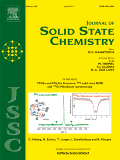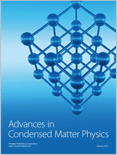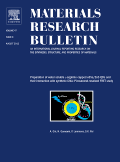
JOURNAL OF ELECTRONIC MATERIALS
Scope & Guideline
Pioneering Discoveries in Electronic, Optical, and Magnetic Materials
Introduction
Aims and Scopes
- Electronic Materials Development:
Research dedicated to the synthesis, characterization, and application of materials specifically tailored for electronic devices, including semiconductors, conductors, and insulators. - Nanomaterials and Nanostructures:
Focus on the development and application of nanomaterials, including nanoparticles, nanowires, and thin films, in improving the performance of electronic devices. - Energy Harvesting and Storage:
Investigations into materials and systems that enhance energy harvesting and storage capabilities, including supercapacitors, batteries, and thermoelectric materials. - Photonic and Optoelectronic Materials:
Research on materials that exhibit photonic properties for applications in lasers, sensors, and solar cells, with an emphasis on improving efficiency and stability. - Sustainability and Green Chemistry:
Emphasizes eco-friendly synthesis methods and materials that contribute to sustainable technology, including recyclable and biodegradable materials. - Characterization Techniques:
Development and application of advanced characterization techniques to analyze the structural, optical, electrical, and thermal properties of materials.
Trending and Emerging
- Perovskite Materials:
An increasing number of studies focus on perovskite materials for applications in solar cells, photodetectors, and light-emitting devices due to their high efficiency and tunable properties. - Flexible and Wearable Electronics:
Research into flexible and wearable electronic materials and devices is gaining traction, driven by the demand for lightweight, portable, and adaptable technologies. - 2D Materials and Heterostructures:
There is a growing interest in two-dimensional materials like graphene and transition metal dichalcogenides for their unique electronic properties and potential applications in advanced electronics. - Electrocatalysis and Energy Conversion:
Research on electrocatalysts for energy conversion processes, particularly in fuel cells and water splitting, is emerging as a critical area of focus. - Machine Learning in Materials Science:
The application of machine learning techniques for predicting material properties and optimizing synthesis processes is becoming a significant trend in the journal. - Quantum Dot Technologies:
Increasing research on quantum dots for applications in optoelectronics, sensors, and quantum computing is becoming a notable theme.
Declining or Waning
- Traditional Semiconductor Materials:
Research on conventional semiconductor materials such as silicon and gallium arsenide has seen a decline as new materials like perovskites and transition metal dichalcogenides gain prominence. - Passive Components:
The focus on passive components like capacitors and resistors is waning as more emphasis is placed on active components and multifunctional materials that integrate multiple functionalities. - Bulk Materials Studies:
There is a noticeable decrease in research focused solely on bulk properties of materials, as the trend shifts towards nanostructured and composite materials with enhanced properties. - Conventional Photovoltaic Technologies:
Research on traditional photovoltaic technologies, particularly silicon-based solar cells, is declining as interest in novel materials and hybrid systems increases. - Single-Function Devices:
The focus on devices designed for a single function is waning, with a shift towards multifunctional devices that combine sensing, energy storage, and conversion capabilities.
Similar Journals

JOURNAL OF SOLID STATE CHEMISTRY
Driving Excellence in Solid State InvestigationsWelcome to the Journal of Solid State Chemistry, a prestigious publication that has been at the forefront of solid state chemistry research since its inception in 1969. Published by Academic Press Inc. Elsevier Science in the United States, this journal offers a rigorous platform for the dissemination of high-impact research articles and reviews in a wide array of categories such as Ceramics and Composites, Condensed Matter Physics, and Materials Chemistry, among others. With an impressive Q2 ranking across multiple categories in 2023 and a commendable performance in Scopus rankings—including a top position in Inorganic Chemistry—this journal serves as an essential resource for researchers, professionals, and students eager to advance their understanding in solid state phenomena. Although it does not currently offer Open Access options, the breadth and quality of the published research ensure significant visibility and scholarly impact. As we continue to converge into 2024, we invite you to explore groundbreaking studies that push the boundaries of knowledge in solid state chemistry.

ACTA PHYSICA POLONICA A
Fostering Knowledge Exchange in the Physics CommunityACTA PHYSICA POLONICA A is a distinguished peer-reviewed journal published by the Polish Academy of Sciences Institute of Physics, offering a platform for disseminating cutting-edge research in the field of physics and astronomy. With an ISSN of 0587-4246 and an E-ISSN of 1898-794X, this journal has been a staple for scholars since its inception, converging its publication years from 1996 to 2024. Despite its current Q4 classification in the Physics and Astronomy (miscellaneous) category, ACTA PHYSICA POLONICA A provides valuable insights and breakthroughs addressing various aspects of general physics. Researchers, professionals, and students will find a wealth of knowledge within its pages, even as it operates in an evolving academic landscape. While subscription options exist, the journal aims to foster collaboration and knowledge exchange in the physics community, making it a vital resource for those seeking to stay at the forefront of research advancements.

Small Structures
Pioneering insights for a sustainable future.Small Structures, published by WILEY, is a pioneering open access journal launched in 2023, dedicated to advancing research and innovation across multidisciplinary fields including Environmental Science, Engineering, Materials Science, Chemistry, and Energy. With a commendable impact reflected in its Scopus rankings—holding the 5th position in Environmental Science and 6th in Engineering, among others—the journal facilitates the dissemination of high-quality, peer-reviewed research that drives scientific progress. It operates under an open access model, ensuring that vital insights and findings are freely accessible to researchers, professionals, and students alike, fostering collaboration and advancements in small-scale structures and their applications. Located in Hoboken, NJ, Small Structures not only aims to enrich the understanding of complexities within materials and their environmental impacts but also aspires to serve as a critical resource for the global scientific community.

SEMICONDUCTORS
Shaping the landscape of advanced material science.SEMICONDUCTORS, published by PLEIADES PUBLISHING INC, is a prominent journal that provides a platform for researchers and professionals in the fields of Atomic and Molecular Physics, Condensed Matter Physics, and Electronic, Optical and Magnetic Materials. With an ISSN of 1063-7826 and an E-ISSN of 1090-6479, the journal has been diligently disseminating knowledge since its inception in 1996 and continues to pave the way for innovative research until 2024. Although currently unclassified in the Open Access model, its influence is underscored by its rankings in Scopus, where it ranks in the 21st-22nd percentile across critical scientific categories. SEMICONDUCTORS serves as an essential resource for cutting-edge research, fostering a greater understanding of semiconductor materials and their applications, thereby assisting the scientific community in pushing the boundaries of technology and innovation.

JOURNAL OF PHYSICS-CONDENSED MATTER
Bridging Fundamental Insights with Industrial Applications.JOURNAL OF PHYSICS-CONDENSED MATTER, published by IOP Publishing Ltd, stands as a premier platform for the dissemination of impactful research in the fields of condensed matter physics and materials science. Since its inception in 1989, this journal has successfully bridged the gap between fundamental and applied research, delivering cutting-edge findings pertinent to both the academic community and industry professionals. Ranking in the Q2 category for both Condensed Matter Physics and Materials Science, it holds a respectable position within the scientific community, as evidenced by its Scopus rankings. With a commitment to fostering innovative research and promoting open dialogue, the journal offers a substantial collection of articles that contribute to the evolving landscape of materials science and physics. Researchers and students are encouraged to engage with the journal’s rich content, which not only enhances their academic pursuits but also plays a crucial role in advancing technologies based on solid-state materials.

Computational Condensed Matter
Delivering Cutting-Edge Research in Computational PhysicsComputational Condensed Matter, a reputable journal published by Elsevier, serves as a critical platform for advancing the understanding of condensed matter physics and related fields. Since its inception in 2014, the journal has become a pivotal resource for researchers and professionals dedicated to exploring electronic, optical, and magnetic materials, as well as materials chemistry and general materials science. With its current standing in the Q3 quartile across multiple categories in 2023, it ranks within the 60th percentile for Materials Science (miscellaneous) and the 54th percentile for Condensed Matter Physics in Scopus, reflecting its growing influence and relevance in the scientific community. The journal aims to publish high-quality, peer-reviewed articles that can foster innovation and collaboration in computational methods applied to condensed matter systems. Researchers interested in cutting-edge insights and methodologies will find Computational Condensed Matter to be an invaluable addition to their academic resources. For those seeking to contribute to or stay informed about the latest advancements in the field, this journal is a must-read.

Journal of Ovonic Research
Bridging Theory and Application in Material Technologies.Journal of Ovonic Research is a distinguished publication dedicated to advancing the fields of electronic, optical, and magnetic materials. Published by VIRTUAL CO PHYSICS SRL, this journal offers a platform for researchers to share innovative findings and developments that push the boundaries of technology and materials science. With an ISSN of 1842-2403 and an E-ISSN of 1584-9953, it provides an important service to the academic community, particularly within Romania and beyond. Despite its recent inception in 2011, the journal has gained traction in the academic landscape, reflecting a Q4 quartile ranking in crucial categories such as Electronic, Optical and Magnetic Materials, as well as in Physics and Astronomy. The Scopus rankings further underscore its positioning, ranking within the 25th to 37th percentile across various disciplines, making it a valuable resource for professionals and students alike. Although the journal currently operates on a non-open access basis, it remains committed to exploring the latest advancements in materials science, encouraging interdisciplinary collaboration and fostering a deeper understanding of surface, coating, and film technologies. As the field evolves, Journal of Ovonic Research stands as a beacon for scholarly communication, bridging the gap between research and practical application.

JOURNAL OF MATERIALS SCIENCE-MATERIALS IN ELECTRONICS
Driving Progress in Electronic Materials ResearchJOURNAL OF MATERIALS SCIENCE-MATERIALS IN ELECTRONICS, published by Springer, is a distinguished international journal that serves as a vital platform for the dissemination of cutting-edge research in the field of materials science, with a keen focus on electronics. Since its inception in 1990, this journal has consistently contributed to the advancement of knowledge across a range of interdisciplinary categories, including Atomic and Molecular Physics, Optical and Magnetic Materials, and Biomedical Engineering, achieving notable quartile positions in various 2023 Scopus rankings. With an impact factor that signifies its scholarly influence, this journal provides a rigorous peer-reviewed environment for researchers and practitioners to share innovative ideas, experimental findings, and theoretical developments. Although it does not currently offer open access options, the depth and breadth of topics covered—including condensed matter physics and bioengineering—make it an essential resource for those at the forefront of materials research. With a commitment to bridging the gap between theory and practical application, the JOURNAL OF MATERIALS SCIENCE-MATERIALS IN ELECTRONICS continues to pave the way for future explorations in the ever-evolving landscape of materials science.

Advances in Condensed Matter Physics
Advancing Knowledge in Quantum Materials and BeyondAdvances in Condensed Matter Physics is a distinguished journal published by HINDAWI LTD, dedicated to the rapid dissemination of high-quality research in the field of condensed matter physics. Since its inception in 2008, this Open Access journal has facilitated wide accessibility to cutting-edge findings and theoretical advancements, with aims to foster collaboration and innovation within the scientific community. With an ISSN of 1687-8108 and an E-ISSN of 1687-8124, the journal covers an extensive range of topics, from quantum materials to nanotechnology, ensuring relevance and engagement across various sub-disciplines. As a testament to its impact in the field, it is ranked in the Q3 category for 2023 within Scopus and holds a position in the 34th percentile for physics and astronomy. The journal's continuous commitment to publishing significant exploratory research until 2024 makes it a pivotal resource for researchers, professionals, and students eager to stay on the leading edge of condensed matter physics advancements.

MATERIALS RESEARCH BULLETIN
Unveiling the potential of innovative materials research.MATERIALS RESEARCH BULLETIN is a prestigious journal published by Pergamon-Elsevier Science Ltd, dedicated to advancing the field of materials science and engineering. Since its inception in 1966, the journal has served as a platform for high-impact research, particularly in areas such as condensed matter physics, mechanical engineering, and materials mechanics. With an impressive Q1 ranking in multiple categories, including Condensed Matter Physics and Materials Science, MATERIALS RESEARCH BULLETIN stands out as a leading resource in its domain, aiming to disseminate innovative research findings and methodologies that address fundamental and applied aspects of materials. The journal’s rigorous peer-review process ensures the publication of high-quality articles, making it an essential resource for researchers, professionals, and students alike. With its ongoing commitment to fostering scientific discourse and collaboration, MATERIALS RESEARCH BULLETIN remains at the forefront of materials research, contributing significantly to the global scientific community.